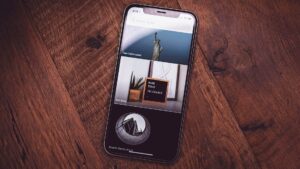Setup and activation of iMessage on iPhone and iPad is an easy task. The real challenge is to set up iMessage on multiple devices. Chances are you’ll run into some sort of chaos and fiasco at some point. I see this happening quite frequently.
There are certain tiny little things to take care while setting up iMessage on iPhone, iPad, Mac, and iPod Touch. Breaking or missing any step during the setup process on any one of the devices will result in non-working iMessage. That’s where this guide will help you, just follow the tutorial step-by-step and you’ll end up successfully setting up iMessage on multiple devices.
How to Set up iMessage for Multiple Devices – Correctly
iMessage syncs messages to all your devices that are interconnected to the same iMessage number and email account. This means your iPhone, iPad, and Mac can all send and receive iMessages, in real-time.
This was part of Apple’s plan to integrate the service into all the devices that you’d be using. So when you get an iMessage while using your Mac, you don’t have to get up to pick the iPhone to read it. It gets delivered to your Mac.
But this only works when you set up things correctly. If not, some messages might deliver on the iPhone, some to the iPad, some to the Mac, and some lost in the winds.
Step #1. If you’ve already set up iMessage, turn it OFF on all devices. Wait for a while before proceeding to step #2.
Step #2. Now, activate iMessage on the iPhone. Only the iPhone. Configure the options if you must. But make sure that the number and email ID are correct and marked with a tick. Under Start Conversations from, check the email ID that you used for iMessage.
Step #3. You should now wait for a while and may ask your friend to send you an iMessage just to make sure things are working till this point.
Step #4. Once things work normally, set up iMessage on Mac. By doing this, you are setting up the iPhone as the “master-device” while the rest of the devices work as subs.
Step #5. On Mac, make sure the conversations start from the email ID.
Step #6. Repeat the process on other iOS devices one by one and check if iMessage gets sent to all devices correctly right after you set up.
So that’s about it.
Wrapping up
Getting iMessage accessed on different devices in real-time is a great feature by Apple, as it integrates all its devices firmly in the eco-systems. One more such useful feature is handsoff, that lets you start work on one device and complete on another.
You may also like to refer to:
- How to Use iMessage Groups on iPhone and iPad: Beginner Guide
- How to Save iPhone Text Messages or iMessages on Mac/Windows PC
- How to Disable iMessages Notifications from Unknown Senders on iPhone
- How to use iMessage on Windows 11: A complete guide
That’s all!
Liked this tips? Do share your feedback with us in the comment below.
🗣️ Our site is supported by our readers like you. When you purchase through our links, we earn a small commission. Read Disclaimer.



